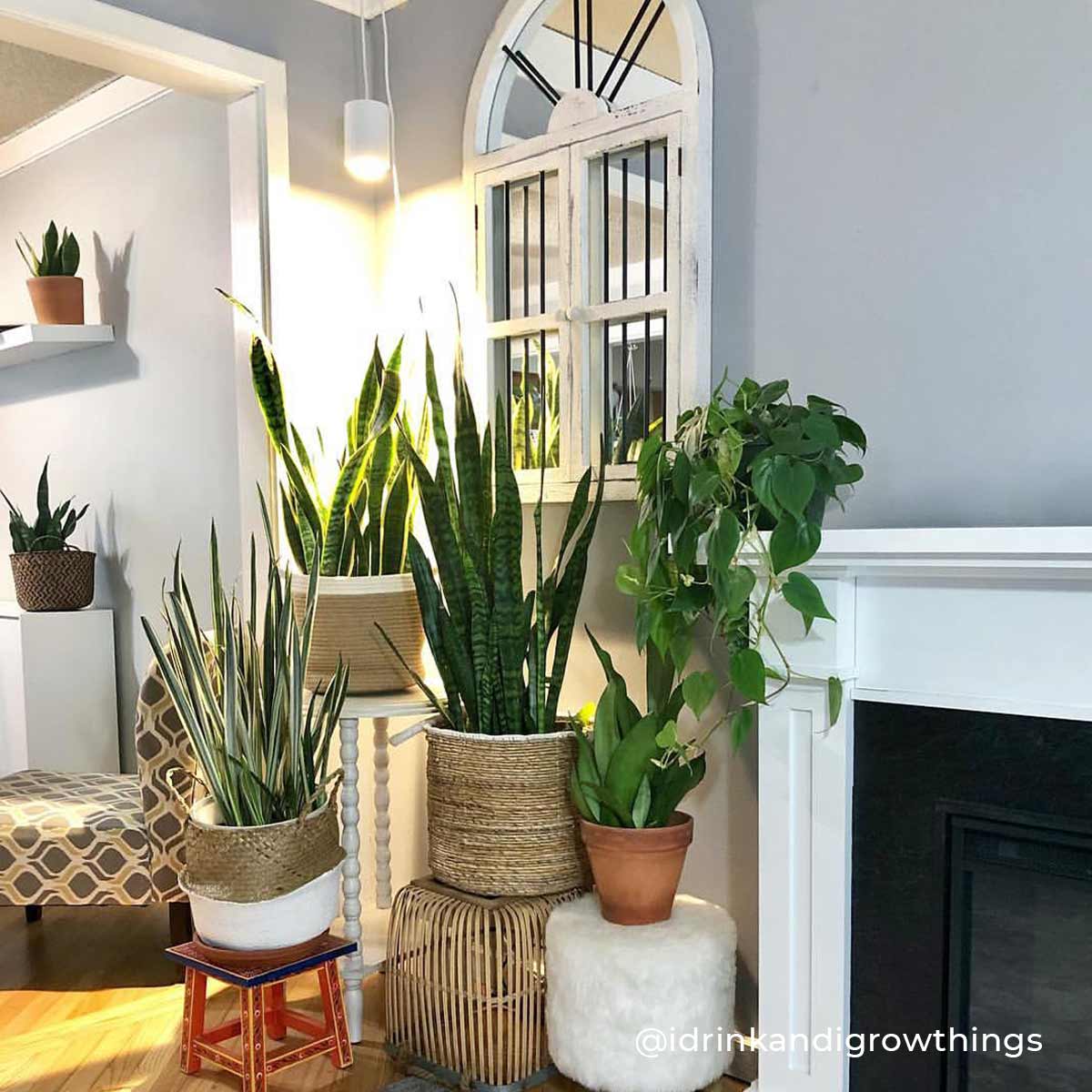
Table of Contents

Snake plants come in a variety of sizes. This miniature Sansevieria trifasciata ‘Laurentii’ is photographed by Gabriella Claire Marino.
This guide will cover:
- How to choose your snake plant
- Ideal soil mixes and fertilization
- Lighting conditions
- Watering
- Temperature and humidity
- How to propagate your snake plant
- Repotting your snake plant
- Troubleshooting snake plant problems
How to choose your snake plant
There are many varieties of snake plants to choose from, including variegated species and darker varieties. In most cases, you should feel confident in choosing whichever species looks best in your home. However, darker varieties (such as the Sansevieria trifasciata) tend to fare better in low lighting conditions. Though variegated species can survive in low light, they will often lose their patterns. Depending on the variety, snake plants can grow up to 8 feet tall, though most grow up to 4 feet. If you’re looking for a specific height for your space, make sure to do some research and keep this fact in mind!
Image of a Sansevieria trifasciata by Jake Goossen.
Ideal soil mixes and fertilization
A fast and well draining soil is crucial for snake plants, because root rot is one of the most common issues that plague them. One easy way to create the perfect snake plant soil is by combining succulent and cactus mix together with regular potting mix in a one to one ratio. To lighten up this soil even further and provide more drainage for pots with small draining holes, you can also add perlite or pumice. It's important to remember that snake plants are not too needy when it comes to fertilizer. This means that once in the spring or once in both spring and summer should be sufficient in terms of nutrients. Make sure that you do not fertilize them during fall or winter or when your snake plant is undergoing stress, as these are periods of rest.Lighting conditions
Snake plants are extremely accommodating when it comes to their lighting conditions, which make them very versatile when it comes to placement. Though they prefer medium light, they can also tolerate low light and high light conditions. An ideal location for a snake plant is around 10 feet away from a south or west-facing window in the northern hemisphere, or north or west-facing window in the southern hemisphere. You could also place it at medium distance away from a grow light. This is 24 - 36 inches away from the small Aspect grow light, or 36 - 48 inches away from the large Aspect grow light.
Snake plants under the small white Aspect, courtesy of @idrinkandigrowthings.
If you can not find a medium light location for your snake plant, err towards a lower light location rather than a direct light location. Putting a snake plant in direct sun can cause them to burn!


